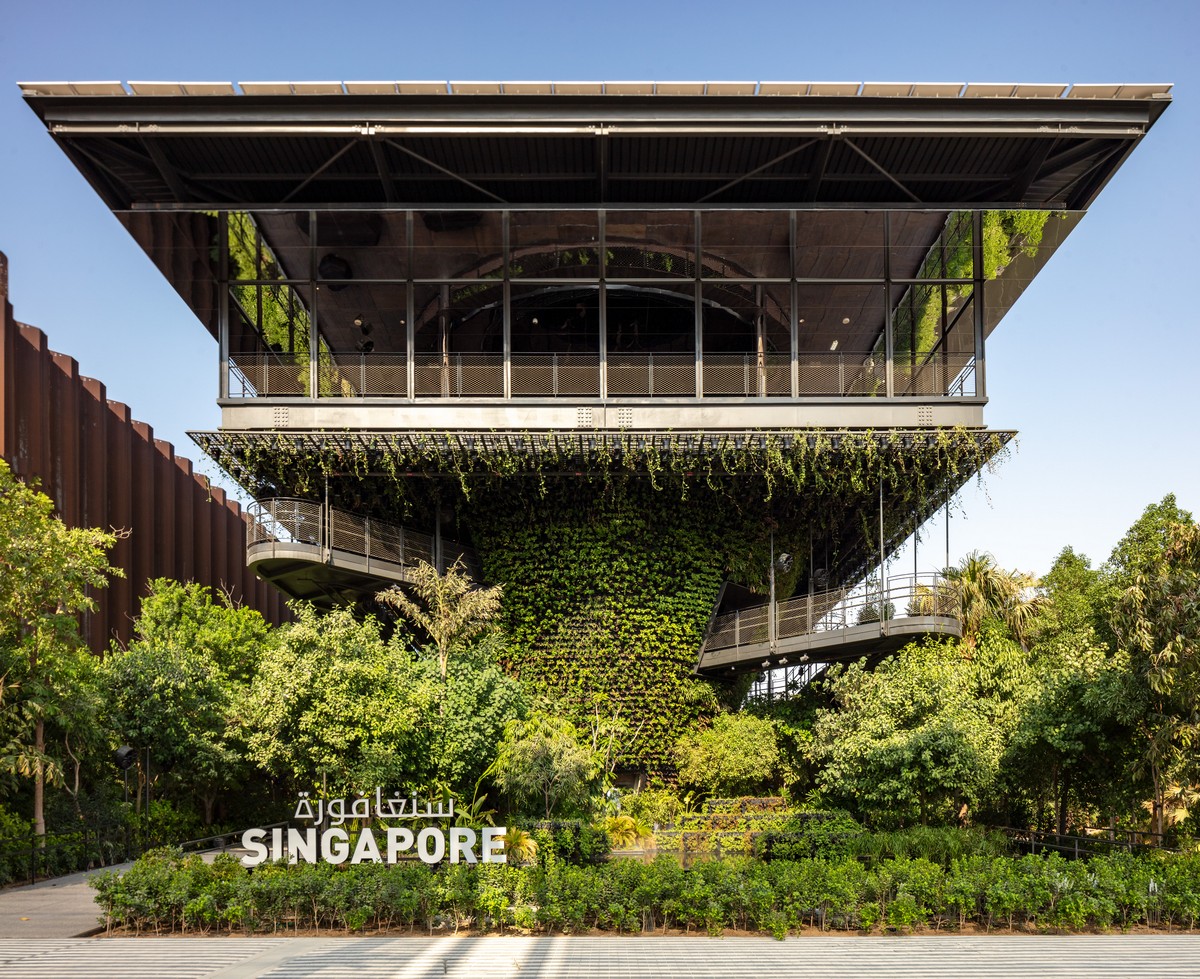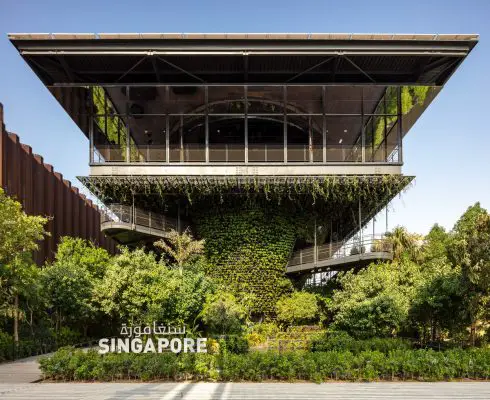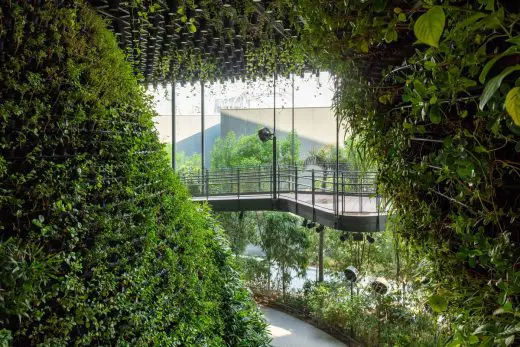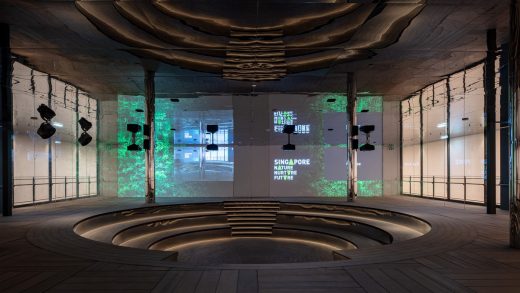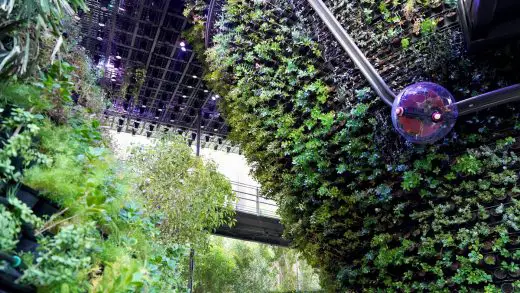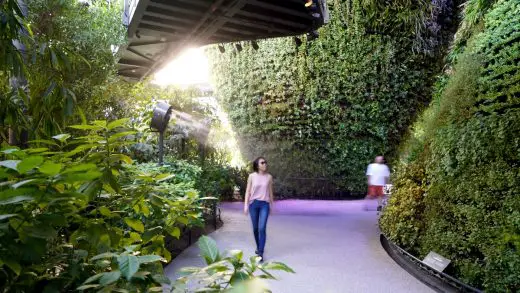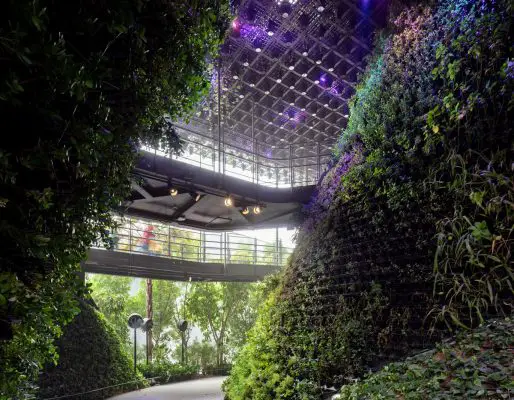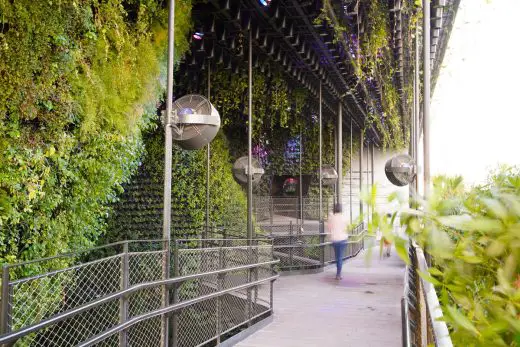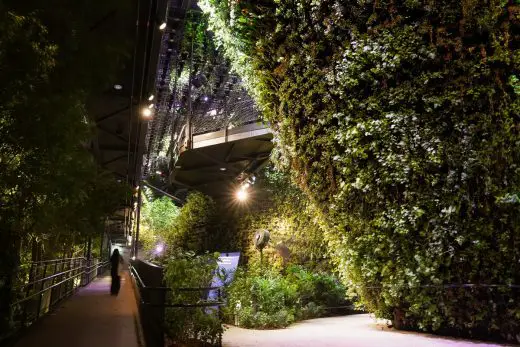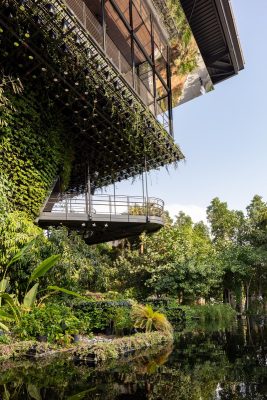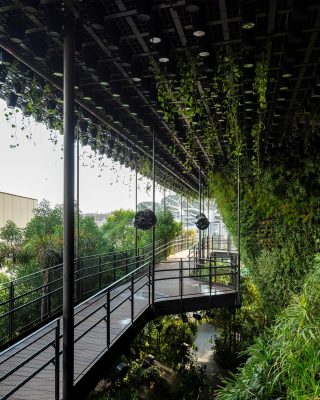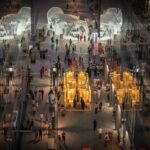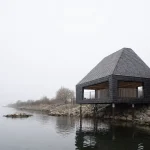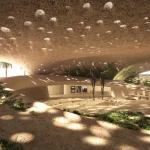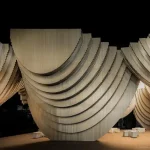Expo 2020 Dubai Singapore Pavilion Building, Architect, WOHA UAE Design Project Photos
Expo 2020 Dubai Singapore Pavilion Design
30 September 2021
Design: WOHA
Singapore Pavilion Designed By WOHA Launched At Expo 2020 Dubai
Photos © Singapore Pavilion, Expo 2020 Dubai, unless stated otherwise
Singapore Pavilion at EXPO 2020 Dubai
The Singapore Pavilion is a sustainable and lush oasis in the desert.
September 30, 2021, Singapore – Singapore’s Urban Redevelopment Authority appointed WOHA to design the Singapore Pavilion for the 2020 World Expo, Dubai. The Expo officially opens its doors to the public on 1 October 2021 and will run until 31 March 2022. The Singapore Pavilion will welcome visitors into a sustainable oasis in the desert that integrates nature, innovation and architecture and encapsulates Singapore’s vision of becoming a City in Nature.
The pavilion is a prototype that demonstrates how the built environment can co-exist with nature. It also mirrors Singapore’s story of thriving in a challenging environment, and, just like land-limited Singapore, the pavilion sits on one of the smallest plots of the Expo but makes an impactful statement despite its size.
To maximise the usable site area, the design takes a layered approach, stacking multiple levels and functions on top of each other. Visitors will go on an experiential journey by following the canopy walk that meanders through the pavilion’s multiple levels while being surrounded by verdant palms, trees, shrubs and vibrant orchids. The Hanging Garden as well as three thematic cones that are draped in vertical greenery add to this immersive, three-dimensional biophilic experience. Pavilion entrance area. Pavilion interior, ground level.
The Open Sky Market platform at the top level is a place for congregation and engagement and is topped by a solar canopy which shelters the pavilion from the elements and generates electricity. The Singapore Pavilion is net-zero in its energy usage and produces its own electricity with its solar canopy that shelters the entire structure.
It uses an efficient solar reverse-osmosis desalination system to meet its water needs. To reduce the usage of energy and other resources, passive strategies like natural cross-ventilation, sun-shading and planting were implemented to create comfortable climate for visitors to enjoy and plants to thrive in.
The Singapore Pavilion houses over 170 varieties of plants which will grow to be even more dense and lush over the Expo period. Besides giving visitors a beautiful biophilic experience, the plants provide measurable ecosystem services like solar heat reduction, sequestration of greenhouse gases, reduction of other pollutants such as PM10 particles, oxygen production, rainwater remediation as well as providing habitats for animals.
Through exhibits and experiences, the Singapore Pavilion shows how we can build resilient, selfsufficient, biophilic, friendly yet highly functional structures that co-exist with nature. The design strategies can be adapted to suit different climates, geographies and can be scaled up to district or even city level.
Our climate crisis shows us that the impact of human actions on the planet cannot be ignored, and that urgent action needs to be taken. This reinforces the aspirations of the SG Pavilion: to design a different future and to create a sustainable, resilient environment in which humans co-exist with nature.
WOHA
WOHA was founded by Wong Mun Summ and Richard Hassell in 1994. The Singapore-based practice focuses on researching and innovating integrated architectural and urban solutions to tackle the problems of the 21st century, such as climate change, population growth and rapidly increasing urbanisation.
WOHA has accrued a varied portfolio of work and is known for its distinct approach to biophilic design and integrated landscaping. The practice applies its systems thinking approach to architecture and urbanism in their building design as well as its regenerative masterplans. Its rating system to measure the performance of buildings, as laid out in their book “Garden City Mega City”, has garnered interest internationally and is being adopted into construction policies in several cities.
Expo 2020 Dubai Singapore Pavilion building design by WOHA Architects images / information received 300921
Location: Jebel Ali, Dubai, UAE
Dubai 2020 Expo Pavilions
Dubai Expo UK Pavilion
Design: Es Devlin
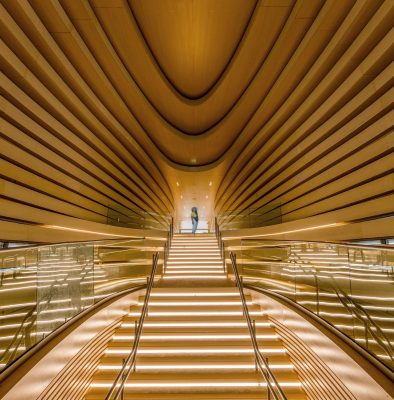
photo by Alin Constantin ; image courtesy of Es Devlin
Expo 2020 Dubai UK Pavilion Building
Dubai Expo Swedish Pavilion Building
Design: Alessandro Ripellino Architects, Studio Adrien Gardère and Luigi Pardo Architetti
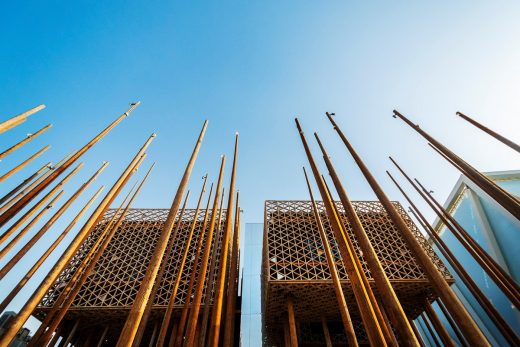
photo courtesy of Swedish government
Dubai Expo Swedish Pavilion Building
Dubai 2020 Expo Pavilions
Design: Santiago Calatrava, Foster + Partners, BIG and Grimshaw Architects
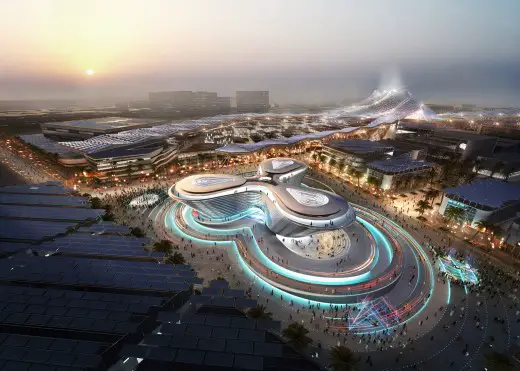
image courtesy of architects
Dubai 2020 Expo Pavilions
Design: METAFORM Architects
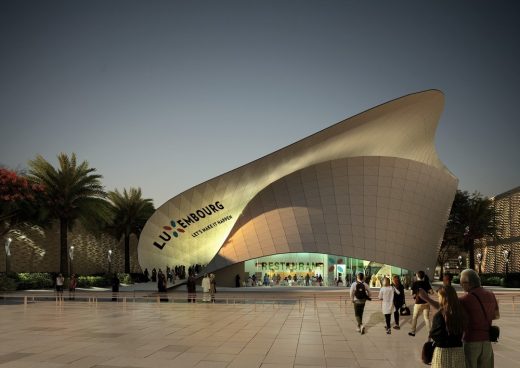
image courtesy of architects
2020 Expo Dubai Luxembourg Pavilion Building
Sustainability Pavilion for Expo 2020 Dubai
Design: Grimshaw Architects
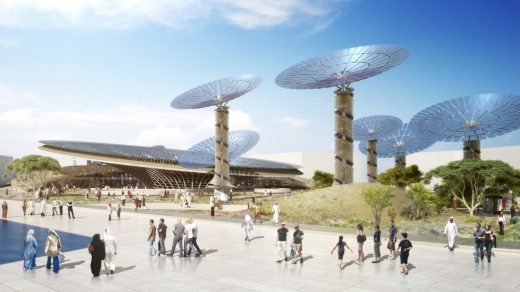
image courtesy of architects
Sustainability Pavilion for Expo 2020 Dubai
Dubai World Expo 2010 Masterplan
Design: HOK / Populous
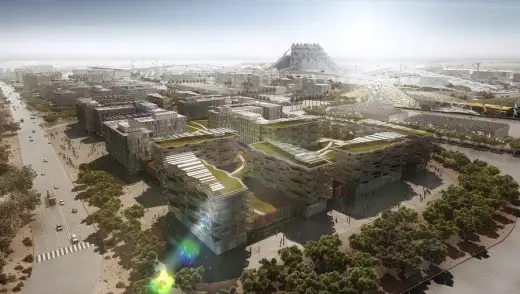
Dubai World Expo Masterplan by HOK / Populous
UAE Architecture
Hyperloop Pods and Portals
Design: BIG-Bjarke Ingels Group
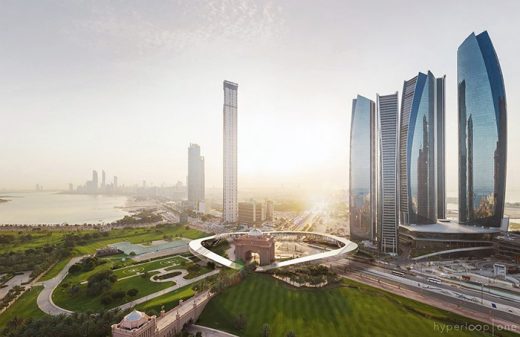
image from architects
Hyperloop Pods and Portals in Dubai
Architecture Tours Dubai by e-architect
Comments / photos for the Expo 2020 Dubai Singapore Pavilion Building design by WOHA in UAE page welcome

